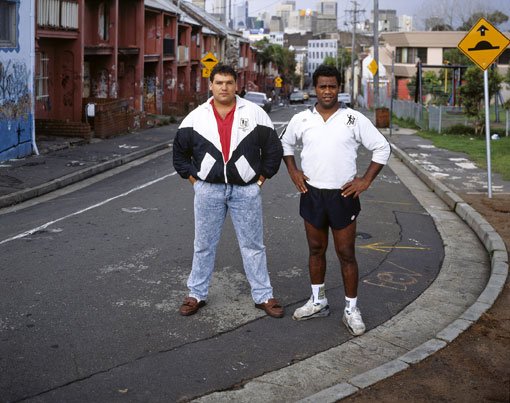
Brenda L Croft – Noel Collett and Shane Phillips, Eveleigh Street, Redfern, 1992, duratran, 182.8 × 275 cm, gift of the artist 2000.
Courtesy: Art Gallery of NSW
Brenda L Croft is a Gurindji/Malngin/Mudpurra artist who works closely with her family, friends and Indigenous community members to create her images. Her works are often biographical and are drawn from her experience of growing up in the suburbs with a white mother and an Aboriginal father who was taken from his family at less than two years of age under the government policy that allowed the removal of Aboriginal children from their parents.
Croft’s works explore issues faced by many Aboriginal people today, including the ongoing effects of the ‘Stolen Generations’, preconceptions of who is actually of Aboriginal heritage and what an Aboriginal person is supposed to look like in contemporary Australian society. Her works serve to present a realistic portrayal of contemporary Aboriginal life – a positive image from an insider’s viewpoint.
This survey exhibition at the Art Gallery of NSW honours more than 25 years of Croft’s practice as an artist. Twenty-one works on display are selected from four series of photographs:
The big deal is Black, 1993. This series focuses on the strong matrilineal connections within Aboriginal families and allows the viewer an intimate insight into family life. The works mainly depict Sydney-based Aboriginal women in their roles as mothers, daughters, sisters, cousins and grandmothers.
In My Father’s House, 1998 is a memorial to her Aboriginal father (and all these children) who was taken from his family under the government policy that allowed the removal of Aboriginal children from their parents beetwen 1869 and 1969.
Strange fruit, 1994. The title is from the Billie Holiday’s song Strange fruit, about the racial atrocities that occurred in the deep south of America. The work also refers to what an Aboriginal person is supposed to look like in contemporary Australian society.
Conference call,1992. Croft took these photos at key sites around Redfern and presents a positive images of Aboriginal urban community.